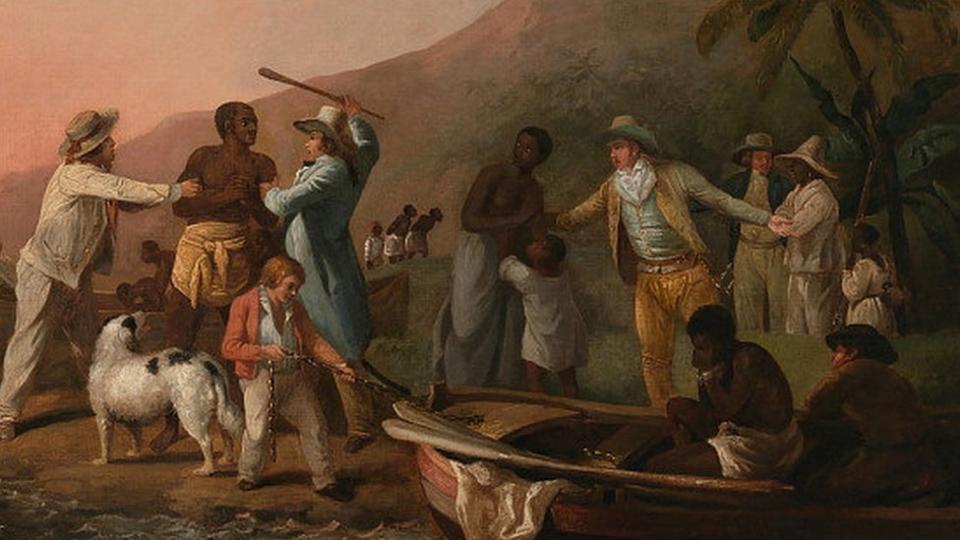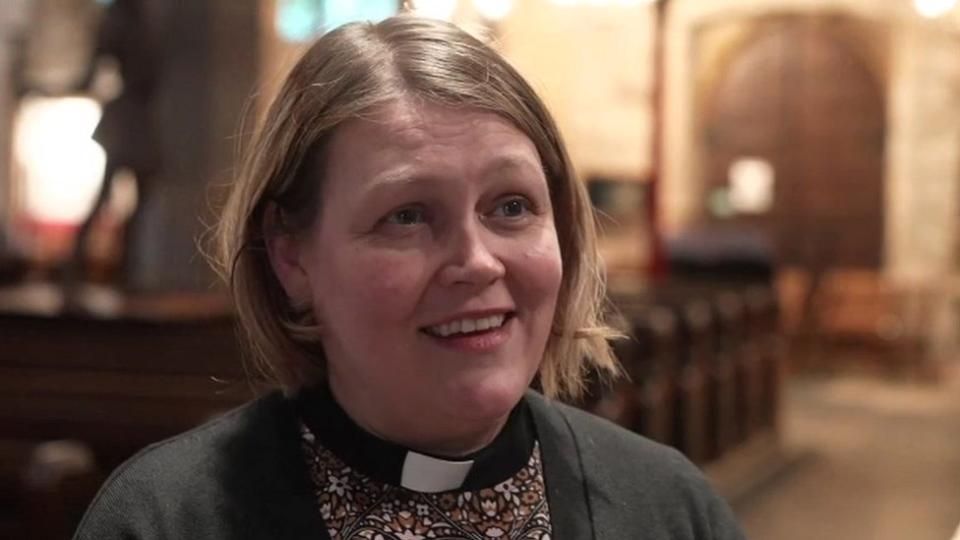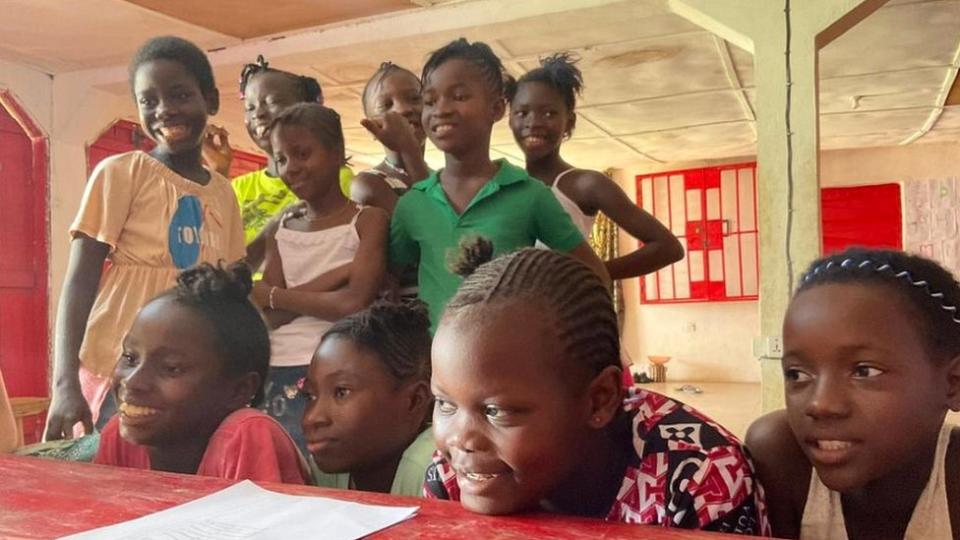The vicar of Lancaster says her church wants to be “honest” about its links to the slave trade, as it hosts sculptures of an 11-year-old enslaved girl.
The Rev Leah Vasey-Saunders said depictions of Sophia Fileen, baptised at Lancaster Priory in 1799, was “part of our journey” in addressing history.
The church has also chosen not to remove graffiti about its slave trade links from a protest in 2020.
Lancaster was the fourth largest UK port in the transatlantic slave trade.
Three sculptures of Sophia are now being displayed in collaboration with arts organisation Facing the Past, which works to “redress omissions” in how Lancaster has marked its part in the trade.
Lancaster Priory said it wanted to highlight the “crimes against humanity” by people associated with the church.
Lancaster and the transatlantic slave trade

-
About three million enslaved Africans were transported on British ships between 1640 and 1807
-
Ships from Liverpool, London and Bristol dominated the routes, supported by Lancaster and Glasgow
-
Merchants with Lancaster connections were involved in the capture and sale of about 30,000 people
-
Their families accumulated property and slaves, and invested their fortunes in mills and businesses
-
Experts say Lancaster became wealthier because of slavery and it was one of the few British towns at the time that sent a petition to the government in support of the trade
Lancaster Priory – along with other churches – is among several British institutions examining their links to the transatlantic slave trade, including the Royal Family, banks and universities.
Ms Vasey-Saunders told BBC North West Tonight it was “really important that we are telling stories about the past”.
Referring to her church, she said: “It’s something that we want to acknowledge, we don’t want to hide it. We want to be honest about it.”


Ms Vasey-Saunders said visitors sometimes asked why the sculptures were being hosted in the church.
“The minute you say these are part of our journey in addressing the history that we have in connection with transatlantic slavery, people go, ‘Ah, oh yeah, that makes perfect sense.'”
Schoolchildren from Sierra Leone – from where it is believed more than 400,000 people were kidnapped and taken as part of the transatlantic slave trade – were involved in making three sculptures of Sophia.
The young girl was among at least 76 black Africans on the church registers.
She was baptised on 15 February 1799, recorded as “a negro aged 11 years of Lancaster”.


One of the children involved in the sculpture project said she was “very excited because I was able to be part of making memories of Sophia”.
Sam Ud-din, from Facing the Past, added they were involved in other schemes to “improve the education” in Lancaster’s schools, and were also considering developing the city’s current walking trail about the slave trade.
“We’ve been looking at whether or not there should be permanent new monuments,” he added.
Why not follow BBC North West on Facebook, X and Instagram? You can also send story ideas to [email protected]


